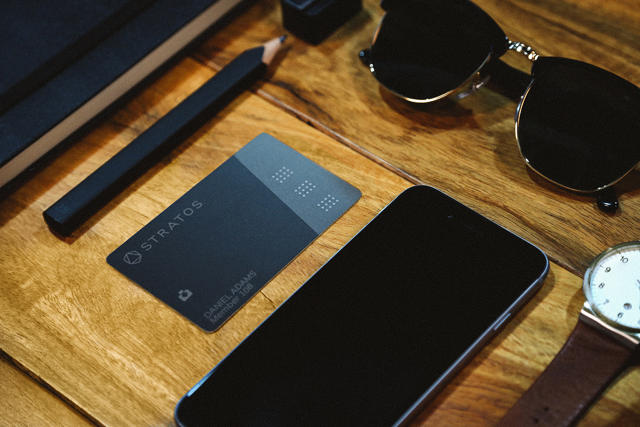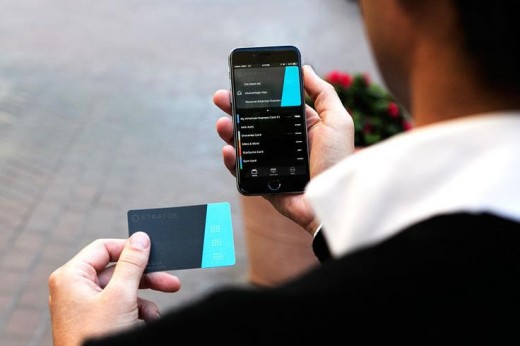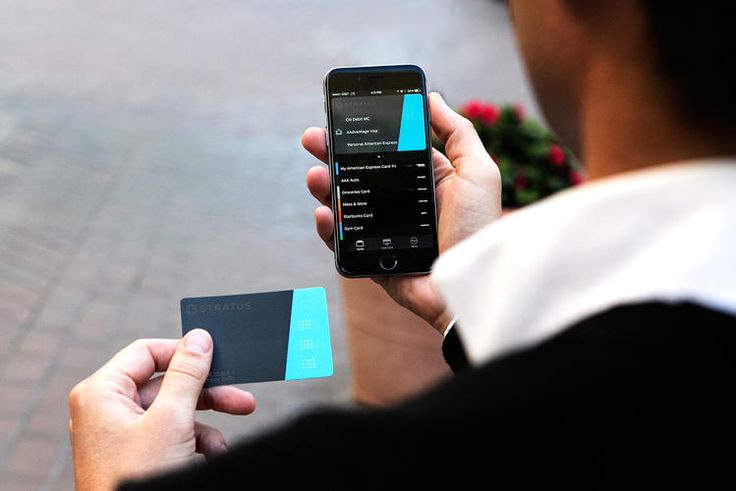Genius Who constructed A Nuclear Fusion Reactor At 17 Takes On The payments business
If the Stratos sensible card works as marketed, it will prove that endurance is a advantage. Having a prodigy for a CEO would not hurt both.
March four, 2015
First there was once Coin, then there was once Plastc: two corporations promising the smart bank card of the future—one card that might store your entire playing cards. the businesses announced their products with gusto. They took purchaser cash and preorders, Kickstarter-style. Then, Coin began apologizing for prolong after delay, and it nonetheless hasn’t officially launched. Plastc never technically delayed, nevertheless it only teased an eventual free up in summer season of 2015. within the period in-between, a slew of competitors have popped up asking the gang to pay their payments earlier than they even debut anything. call it Kickstarter Syndrome. a lot of product movies. not so many exact products.

The smart bank card constructed with the aid of the Michigan-based totally startup Stratos and designed by using Herbst Produkt, announced this week, will likely be to be had within 30 days. CEO Thiago Olson has positioned Stratos to be aggressive among friends, and that every one came right down to patience. Whereas different startups rush to be the first “disruptor” to announce a product, Stratos adopted a basic design and construction course of. the company raised $7 million in challenge capital, hired 50 individuals, polled another 1,200 folks, honed its technologies, polished the person experience, and worked with producers to verify the whole thing might be produced reliably at scale. (although whether or no longer there may be a marketplace for sensible credit cards is still in query.)
“I gained’t lie, it’s been arduous to stay quiet, especially when Coin received out really early on,” Olson says. “We roughly looked at what we had been building, the electronics and complexity—and particularly the manufacturing—and realized it’s difficult to be dependable at [a large] volume. We wished to avoid giving shoppers [a bad] expertise.
A Boy Genius Grows Up
Olson, 25, speaks with the articulate polish of any startup CEO, however by way of background, he is extra of a scientist than an entrepreneur. He was a wunderkind who constructed a nuclear fusion reactor in his basement at age 17. He studied electrical engineering and plasma physics at Vanderbilt and Princeton, worked in multiple U.S. nationwide laboratories and a particle accelerator in Switzerland, and joined the division of safeguard where he shifted from R&D to develop into, as he describes it, a “mini VC” or mission capitalist, giving out research can provide. somewhere along the line, he had a planet named after him, and he caught the entrepreneurial worm, founding Stratos in 2012 in his home state of Michigan.
Olson’s background may just appear like overkill within the funds sector, however his engineering thoughts isn’t wasted at Stratos. the card—like every of its competitors—is a remarkably complicated piece of hardware. inside a body that’s as thin as a stock bank card, it squeezes in two magnets that dynamically program its magnetic strip to imitate any card you possess (a redundancy its opponents lack, which Stratos believes makes its card swipe more reliable in the field), a battery (which lasts up to two years), an accelerometer (that enables users to faucet their card a couple of times to drag up information about it on their cellphone), a Bluetooth transmitter (to talk to the cellphone), three laborious buttons (to quick choose bank cards when your cellphone isn’t around), and LED lights (to point out which card you’ve chosen).

Designing And growing the old school manner
“we are able to’t just purchase a chip off the shelf to make this thing work,” Olson says. “We work with issues on the wafer level. We get the silicon from the manufacture, grind it down in a easy room.” Sourcing the fitting manufacturing crew to do that work was once an enormous pastime—one that plagues Kickstarter-fashion hardware frequently. In a conventional design course of, a company usually has quite a few again-and-forth with manufacturing facility production engineers ahead of ever taking a product to market, on the grounds that excellent concepts on paper or in prototype don’t at all times translate to mass manufacturing. (consider, for example, why Apple poeticizes the method of milling aluminum in its product videos.) Kickstarter projects, designed by means of two-person teams without expertise in manufacturing unit production, are often naive to such compromises, and so they are able to promote renders slightly than realities—grand ideas like coffee makers that can roast your coffee, too—that can’t come to fruition (although Kickstarter itself has tried to crack down on that pattern.)
With usable hardware, Stratos started out stress-testing—bending the cardboard lots of times, checking out whether or not it used to be waterproof, and guaranteeing it labored on all different types of swipeable terminals. Olson’s crew also spent years taking into consideration use-case situations. Will it work at ATMs? sure. What occurs when the cardboard’s battery runs out? There’s an early warning, and a brand new card is mechanically shipped your means when the previous one is low. What occurs should you pay at a restaurant and your waiter hits a button, altering the card? The system is designed so the waiter would in fact need to deliberately double faucet it, and also you’d obtain a text notification if the cardboard modified. This level of concept is commonplace for big products made with the aid of main firms, but the little pain factors add up for churned out Kickstarter merchandise, like the Ouya, which had a slew of problems including an horrible controller, unreliable backend, and awful interface, even after it raised file quantities of money.

A Subscription-based totally trade edition
users subscribe to Stratos for $95 a yr. With Coin and Plastc, you purchase the cardboard outright. Olson believes his means will reconcile anxiousness with early adoption, as a result of whenever the company releases a new, better card, users will receive it as a substitute. Stratos is working on its 2d-technology product, on the way to add the micro radio transmitter wanted for full toughen of the ecu-standard Chip and PIN credit cards, as well as an onboard thumbprint identification lock to maintain your card more secure. there’s a common sense at play right here: Stratos doesn’t need to take care of legacy hardware if everyone is on the company’s latest card. “The funds landscape is altering all of a sudden, Olson says. “We don’t essentially need you on our final-gen card three years from now.”
Granted, simply how massive the market is for individuals who will pay for the privilege to pay for things remains to be unsure. About 70% of americans use bank cards, but their utilization at a all-time low. Stratos has to compete with a new era of smartphone, and even smartwatch-based totally payments on the horizon. And now matter how painstaking the improvement, it’s impossible to know if Stratos playing cards actually work except they’re in the palms of shoppers, using them across the true world.
(219)










